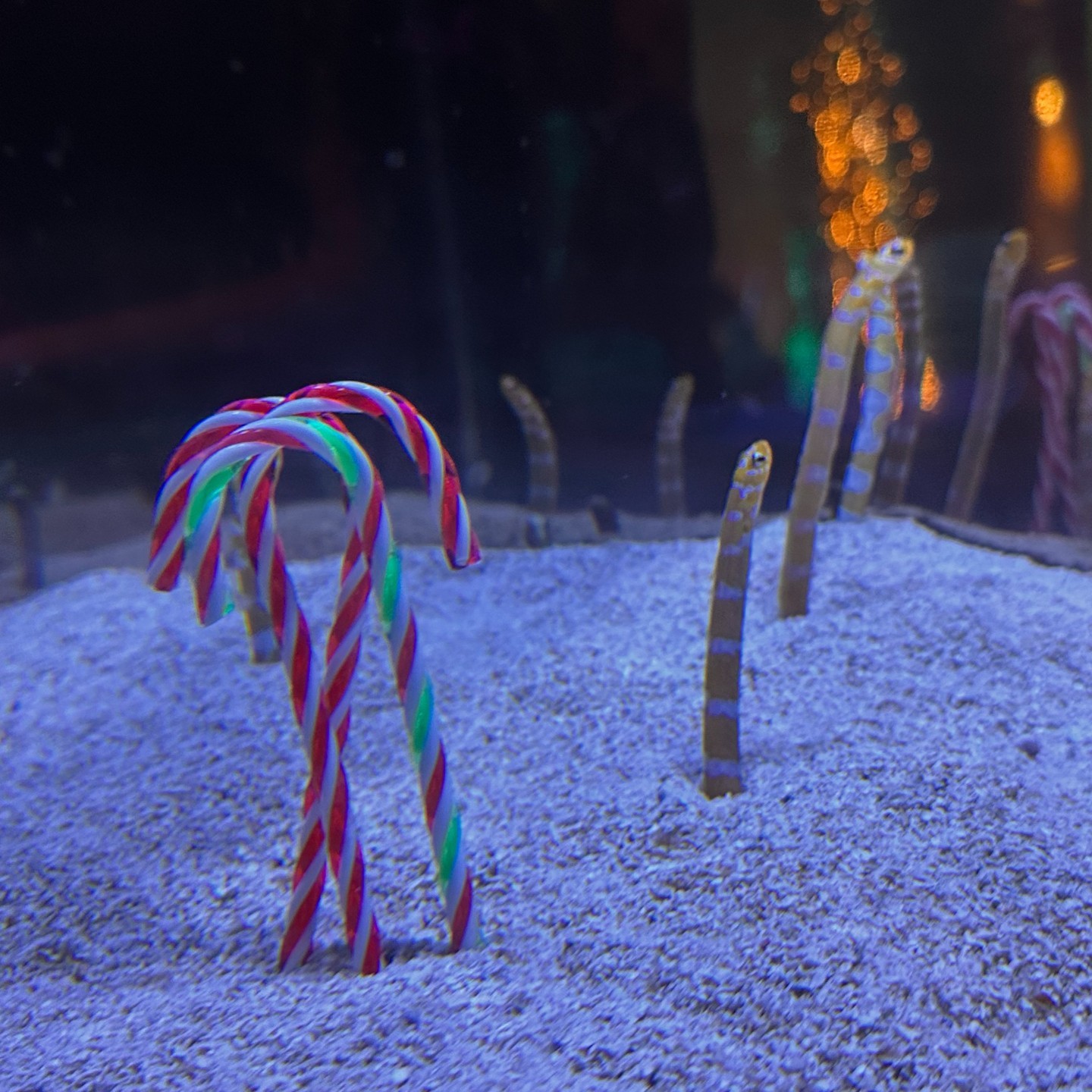- Introduction to the Spotted Garden Eel and their habitat within aquariums
- Examination of the Spotted Garden Eel’s behavior and interaction with the artificial candy cane environment
- Insights into the implications of creating engaging environments for captive marine species
- Impacts of innovative exhibits on zoo and aquarium management and visitor engagement
- Exploration of wildlife conservation’s role in these settings
The Spotted Garden Eel, scientifically known as Heteroconger hassi, is a peculiar species found in the warmer parts of the Atlantic Ocean, Indo-Pacific, and the Red Sea. These intriguing creatures are part of the conger eel family, identifiable by their lengthy bodies adorned with small black spots. Spotted Garden Eels are known to live in sandy flats where currents are not too strong, allowing them to construct burrow-like habitats where they spend much of their life partially buried, only emerging enough to feed on plankton. This defensive lifestyle helps protect them from predators while fostering a community-like environment among other garden eels. In recent times, aquariums have taken a novel approach by introducing artificial environments to captivate these eels, one intriguing example being the candy cane forest.
The garden eels were seen exploring artificial candy canes, an addition that has fascinated visitors and provided a novel sensory experience for the eels. By mimicking aspects of their natural surroundings combined with fanciful elements, aquariums aim to enrich the lives of captive animals. Researchers and zoo managers observe such interactions to assess the zoological impact on the eels’ behavior and health. It reveals much about how fabricated settings can stimulate natural behaviors, important for preserving mental and physical well-being. Keeping animals engaged with dynamic environments contributes to their quality of life, challenging them in ways that encourage exploration similar to what they might encounter in the wild.
The introduction of artificial structures like the candy cane forest plays a crucial role in modern zoo and aquarium management. Providing enriching experiences for species like the Spotted Garden Eel not only benefits the animals but also creates compelling attractions for visitors. As humans, we are naturally drawn to vibrant and imaginative settings, which make us ponder about the complexities of the animal kingdom and the environments within which they thrive. When visitors observe the interaction between animals and their habitats, it fosters a deeper understanding and appreciation that can translate into support for conservation efforts.
Creating interactive and stimulating environments for animals in captivity is a delicate balance of science and creativity, impacting both the species housed and the institution’s visitors. Displays such as the candy cane forest bring joy and learning to the public while pushing the boundaries of traditional exhibition techniques. This approach requires collaboration between zoologists, behaviorists, and designers to ensure that the exhibits meet the needs of the animals they are designed for. Incorporating scientific research on the animals’ natural behaviors and ecological roles into exhibit design elevates the standard of animal care and encourages sustainable practices among institutions worldwide.
Finally, the significance of wildlife conservation in contemporary zoology cannot be overstated. Modern aquariums and zoos serve as educational platforms that offer insight into the world’s diverse ecosystems and the organisms inhabiting them. They provide a critical space for researching species like the Spotted Garden Eel and support conservation initiatives aimed at preserving marine biodiversity. Educating the public about these beautiful creatures and their habitats helps drive awareness and action toward conserving marine environments. Innovative exhibits not only entertain but also illuminate the delicate balance life depends on, ultimately contributing to the broader conversation on environmental stewardship.
*****
Source Description
The Spotted Garden Eels came out of their burrows to wander through their candy cane forest before ringing in the New Year! The artificial candy canes give these little eels something new and festive to explore.
Here’s an extra sweet treat for YOU. Get your Gold or Platinum Membership with 2 extra months FREE at the link in our bio


